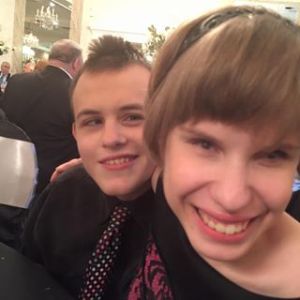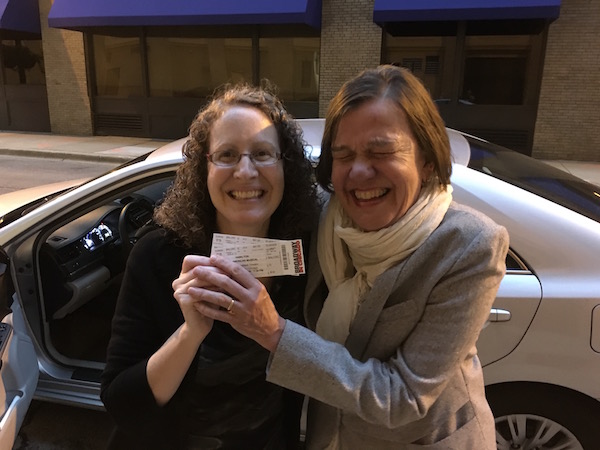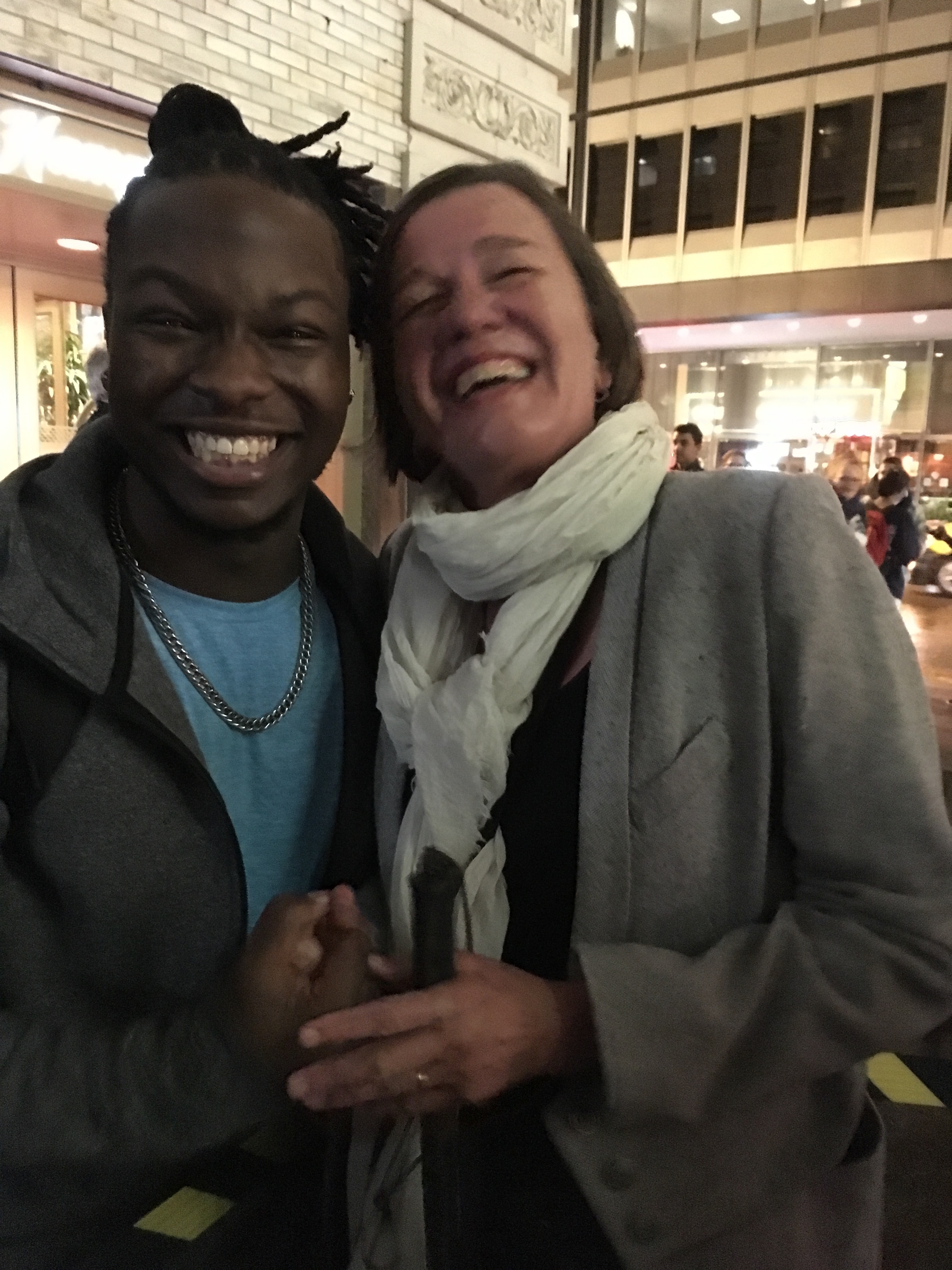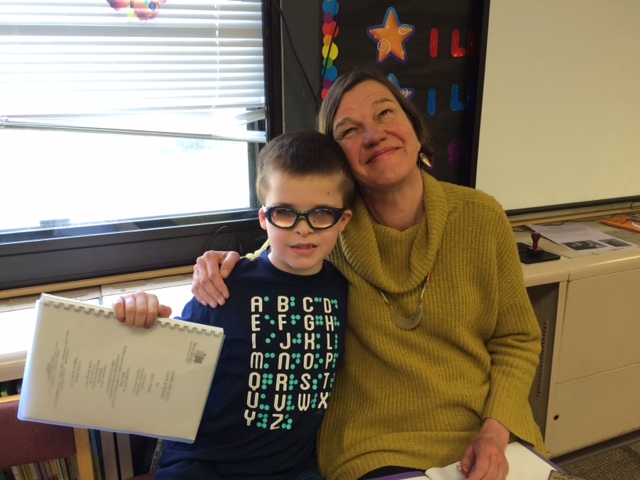Guest post by Ali Krage: A Blind Date at the Movies, Part One
January 3, 2018 • 5 Comments • Posted in blindness, Braille, careers/jobs for people who are blind, guest blog, technology for people who are blind, writingI met today’s guest blogger Ali Krage at a “low-vision conference” in 2004. “I’m blind like you and I can read Braille and I go to the same school my twin sister goes to, but she can see, can you give me your email address? We can be pen pals!” Who could refuse an invitation like that? Ali was only 11 years old back then. She’s in college now and helps me out by writing guest posts on the blog I moderate for Easterseals National Headquarters. This one was published on the Easterseals blog earlier today, it’s about the challenges and joys Ali experiences going to the movies with her boyfriend…when neither of them can see.

Joe and Ali.
by Alicia Krage
When it comes to my blindness, one of the most common questions I get asked is, “How do you watch movies?” This is typically referring to how I go see movies at a movie theater.
Movie theaters provide audio description, which describes the movie when there is no dialogue. The description comes through a headset, so it’s not like the entire movie theater is hearing it.
A lot of movie theaters I’ve gone to over the years have given me the device for people who are deaf — that device enhances the sound and provides closed-captioning. The theater my boyfriend and I go to in our college town here in Illinois is great, though. They have never made this mistake. So ever since Joe and I started going to AMC Market Square 10 in DeKalb, I’ve enjoyed going to movies.
When I go to movies, I usually ask my mom for recommendations — she goes to movies way more than me. This time, though, I didn’t need a recommendation. I went and saw a movie I’d already seen!
My family and I went to see Wonder the day after Thanksgiving, and I loved it so much that I immediately texted my boyfriend when I got out of the theater.
I just saw the most amazing movie.
All iPhones come with an app called VoiceOver — the embedded voice synthesizer says each word I type out loud when I press space, so I can hear any errors as I’m typing. I explained the movie to him in short detail before adding three words.
Next movie date?
Joe’s enthusiastic reply came one minute later.
Sounds perfect!
Finals week was approaching. It was difficult to find time between our busy schedules, but one Saturday we took the bus over to the movie theater. One of us always calls from the bus to give them the estimated time we should be arriving and to inform them we’re both blind. I tell them what movie we’ll be seeing and inform them we’ll need assistance retrieving our descriptive audio devices for that movie as well as getting popcorn and whatever else we want at the concession stand. My phone call is always met with a very friendly, “No problem.” We are always met by someone waiting for us when we enter. Every single time.
And so it went on the Saturday we arrived to see Wonder. The manager said hello to us in that tone of voice where you know without them having to say it that they recognize you. We don’t go to the movies all that often, but it seems we are two familiar faces anyway. I could tell how enthusiastic Joe was about seeing this movie by the excitement in his voice at the ticket booth when he said, “Two tickets for the movie Wonder.”
The manager led us over to the concession stand and told us he’d go test the devices while we ordered. I kindly replied, “Please make sure it’s the device for the blind, not the audio enhancement devices.” I always say this a few times, just to make sure I’m getting what I need. The manager assured me he would, and we stayed at the concession stand to order what we wanted. The employee working the concession stand helped with our drinks and put the butter on our popcorn for us. (See? They really go above and beyond here!) When the manager returned, we had another conversation.
- Me, just to clarify: These are the descriptive audio devices, right? It’ll describe the movie?
- Manager, sounding confident: Yes.
- Joe, as per usual: And it’s already on?
- Manager, again confidently: Yes!
We know exactly what questions to ask. Teamwork! The manager led us to our seats in the theater, and going along with the script, I asked, “Can someone please escort us out when the movie is done?” We were satisfied once again when we received the reassuring answer, “Yes.”
Stay tuned for Part Two, when Alicia and Joe need a popcorn refill and Alicia’s resourcefulness saves the day.
Bonus: Alicia gives us a review of the movie Wonder from her point of view.





